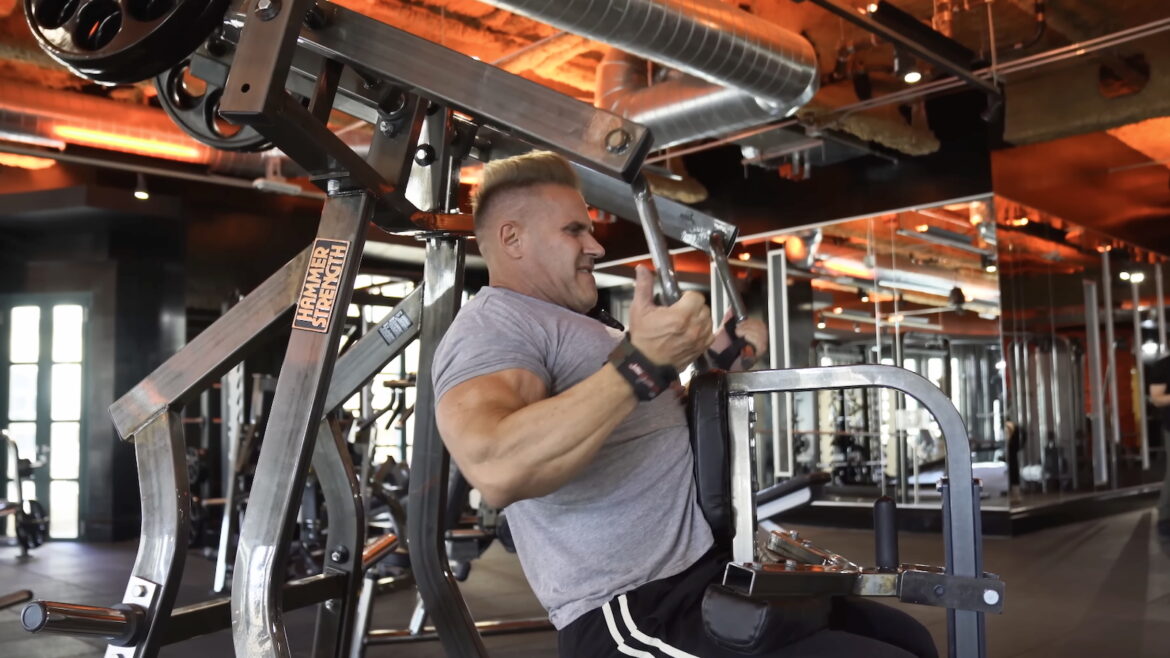The four-time Mr. “O” isn’t a fan of failure
Failure is an option. While Jay Cutler didn’t hold that attitude when he competed for Mr. Olympia titles, he doesn’t view growing muscle in quite the same light.
At least, not when it comes to following the overrated “training to failure” concept.
Turning the clocks back two decades, Cutler performed a modified version of his back routine from 2005 (the year before he secured his first Sandow trophy) in a YouTube video published on Nov. 12, 2024. In addition to delivering lat-building tips and insight on some of the best back exercises, the four-time Mr. “O” poured water on the theory that training to failure is the key to muscle growth.
[Related: Best Supplements for Muscle Growth]
Jay Cutler’s 2005 Back Routine
Cutler pulled a page out of his “One Step Closer” DVD to recreate his back routine from 20 years ago, right when he was on the verge of taking over the Olympia throne from the legendary Ronnie Coleman. The 51-year-old wisely didn’t attempt to relive his glory days from a strength perspective, opting for lighter weights and different machines, in some cases.
Here’s a rundown of the exercises Cutler performed during his nostalgic back workout:
[Related: Best Dumbbells]
Cutler delivered technique and strategy tips throughout the session, highlighting why certain exercises are best for each muscle from a symmetry perspective. Some key takeaways from his exercise breakdowns include:
- The reverse-grip pulldown helps develop lat thickness from front to back — a key part of achieving the coveted V-taper look that’s characterized by broad shoulders, a well-defined back, and a tight waist.
- Cutler incorporates a pull forward motion into one-arm rows to lengthen his lats rather than simply lifting the dumbbell straight up and down.
- Cutler credits the T-Bar row for helping him surpass Coleman, who was known for performing the exercise with obscenely heavy loads.
- The reverse-grip row machine is also known as the DY row as an ode to revered bodybuilder Dorian Yates. This exercise helps develop the lower lats to create a “Christmas tree” shape.
- Cutler liked to perform seated cable rows three or four exercises deep into his workout, preferring to work on width before depth.
[Related: Best Whey Protein Powders]
Training to Failure Isn’t The Answer
In between singing the praises of the T-Bar row and giving the backstory of the DY row, Cutler made it clear he doesn’t subscribe to the theory that training to failure is the secret to maximizing your gains.
“The funny thing is I never train to failure,” he stated.
Considering he reached the pinnacle of success four times in a sport where “emptying the tank” is often the motto to live by, that may come as a surprise. However, Cutler has his own ideas about what’s best for his body.
“For me, I always mention the volume game, rep after rep, blood flow, short rest periods, intensity,” he explained. “That’s what’s going to help get the fibers going. Flush the muscle with blood and move those nutrients.”
Instead of focusing on exercise selection or volume, Cutler believes nutrition is a much more integral component of the muscle-building process.
- Cutler’s three most important meals are breakfast, a meal one hour before training, and a meal one hour after training.
- All three meals should include carbs and protein.
- Those who train in the morning may benefit from consuming creatine or branched-chain amino acids (BCAAs).
[Related: Best BCAA Supplements]
Ultimately, Cutler’s stance on training to failure may go against the grain in some circles, but research shows the optimal range for hypertrophy is eight to 12 reps. (1) Plus, there’s a point of diminishing returns with any exercise.
And, when you take a step back and look at the bigger picture, it’s clear what side of the “training to failure” line you should stand on.
“The nutrition fuels the training,” Cutler explained. “The recovery is what helps the body grow, which is going to come from food, rest and being outside the gym.”
More Bodybuilding Content
References
- Schoenfeld BJ, Grgic J, Van Every DW, Plotkin DL. Loading Recommendations for Muscle Strength, Hypertrophy, and Local Endurance: A Re-Examination of the Repetition Continuum. Sports (Basel). 2021 Feb 22;9(2):32. doi: 10.3390/sports9020032. PMID: 33671664; PMCID: PMC7927075.
Featured Image: @JayCutlerTV / YouTube
